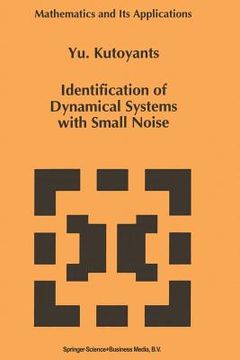Share
Identification of Dynamical Systems with Small Noise (in English)
Yury A. Kutoyants
(Author)
·
Springer
· Paperback
Identification of Dynamical Systems with Small Noise (in English) - Kutoyants, Yury A.
$ 104.20
$ 109.99
You save: $ 5.79
Choose the list to add your product or create one New List
✓ Product added successfully to the Wishlist.
Go to My WishlistsIt will be shipped from our warehouse between
Friday, July 05 and
Monday, July 08.
You will receive it anywhere in United States between 1 and 3 business days after shipment.
Synopsis "Identification of Dynamical Systems with Small Noise (in English)"
Small noise is a good noise. In this work, we are interested in the problems of estimation theory concerned with observations of the diffusion-type process Xo = Xo, 0 t T, (0. 1) where W is a standard Wiener process and St(') is some nonanticipative smooth t function. By the observations X = {X, 0 t T} of this process, we will solve some t of the problems of identification, both parametric and nonparametric. If the trend S(-) is known up to the value of some finite-dimensional parameter St(X) = St((}, X), where (} E e c Rd, then we have a parametric case. The nonparametric problems arise if we know only the degree of smoothness of the function St(X), 0 t T with respect to time t. It is supposed that the diffusion coefficient c is always known. In the parametric case, we describe the asymptotical properties of maximum likelihood (MLE), Bayes (BE) and minimum distance (MDE) estimators as c --+ 0 and in the nonparametric situation, we investigate some kernel-type estimators of unknown functions (say, StO, O t T). The asymptotic in such problems of estimation for this scheme of observations was usually considered as T --+ 00, because this limit is a direct analog to the traditional limit (n --+ 00) in the classical mathematical statistics of i. i. d. observations. The limit c --+ 0 in (0. 1) is interesting for the following reasons.
- 0% (0)
- 0% (0)
- 0% (0)
- 0% (0)
- 0% (0)
All books in our catalog are Original.
The book is written in English.
The binding of this edition is Paperback.
✓ Producto agregado correctamente al carro, Ir a Pagar.

